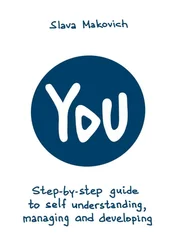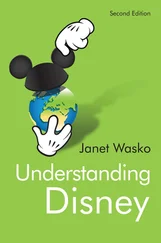The traditional scientific wisdom was that female sexual differentiation, including brain differentiation, would occur if these male hormones (e.g., testosterone) were absent. Indeed, females were once seen as the “default” sex, with typical female development occurring as long as male hormones were absent. Recent evidence suggests that sexual differentiation is more complex. Male and female sexual differentiation, including brain differentiation, is indeed related to the presence or absence of male hormones, but it is also related to other prenatal mechanisms (Arnold, 2004; Kopsida, Stergiakouli, Lynn, Wilkinson, & Davies, 2009). For example, there are specific genes on the Y and X chromosomes that affect male or female brain development directly (without, for instance, affecting male hormone levels). Thus, without these additional gene-based mechanisms, male and female sexual development, including brain differentiation, would not occur in a typical fashion. If so, male (XY) or female (XX) fetuses having one or more of these genes inactivated may have altered differentiation of the body (e.g., intersex). Similarly, if it is a gene very specific to the brain, any variation or mutation of this gene may alter neural development, leading to atypical gender identity (such as being transgendered) and atypical sexual attractions, including being gay, lesbian, or asexual.
One related possibility is that altered X- or Y-linked genes or prenatal hormones, or their combination, create a form of genderlessness in some asexuals. In other words, some asexuals may lack sexual attraction to both males and females—a genderless sexual orientation—and lack a male or female gender identity—a genderless identity—because these biological processes have a unique effect on brain development. For example, asexuality in women may occur because of an absence/alteration of male hormones (de-masculinization) in combination with an inactivation of one or more (X) female-specific genes affecting the brain (de-feminization). Thus, some asexual women may have brains that are neither “masculine” nor “feminine.” In contrast, the sexual orientations and identities of gays and lesbians may be the result of some “reversal” of a typical masculinization or feminization process. For example, prenatal exposure to a higher-than-typical level of male hormones has been argued to masculinize lesbians, including their sexual/romantic attractions (Ellis & Ames, 1987; Grimbos, Dawood, Burriss, Zucker, & Puts, 2010).
Let’s also consider how environmental factors could contribute to asexuality, particularly through its association with gender identities and gender roles. One way is through asexual people’s identification or dis-identification with one or both sexes. Researchers have argued that identification processes are important in sexual orientation development. Psychologist Darryl Bem asserts that if one’s gender identity and gender role are traditional—for example, a boy identifying with other boys and engaging in traditional “masculine” behaviors, and so forth—it makes the opposite sex different and “exotic” and, ultimately, sexually arousing. Conversely, if a boy does not identify with boys but with girls, and engages in traditional feminine behaviors, it may make the same sex seem different and exotic and sexually arousing. Bem suggests that these processes can explain traditional sexual orientation development—in other words, how masculine boys become attracted to feminine girls. He also suggests that the same processes can explain how same-sex attraction occurs in gender nonconforming children—that is, how feminine boys become attracted to other, more masculine boys (Bem, 1996).
But what if a child has little identification with either sex? Would this child become bisexual, as both sexes would seem different and exotic? Or, rather, would a child’s dis-identification with both sexes create, at least in some, an ambivalence to both and a sexual disinterest in all people later in life (i.e., asexuality)? This is an intriguing question and perhaps worth pursuing in future research. However, it is important to keep in mind that Bem’s theory, even as it applies to typical sexual orientation development, is controversial and lacks direct support. Moreover, it is also important to remember that the causal relationships among these variables could be viewed in the reverse direction: one’s attractions may cause the degree to which we identify with our own sex. So, if some asexual people do not identify as male or female, it may be because their lack of sexual attraction makes them feel like they have little in common (or dis-identify) with being male or female, not the other way around. Moreover, in line with this reasoning, as I suggested above, some women’s lack of sexual attraction may make them less “feminine,” because they are not as socialized to be an object of desire.
Sex and gender are complex constructs, but they are useful in understanding asexuality. Gender differences in asexuality seem to parallel gender differences in sexuality (e.g., masturbation). We do not know whether asexual people conform to traditional gender roles, although I speculate that asexual people are, on average, less conforming (e.g., asexual women have less object-of-desire self-consciousness). There is a strong suggestion in the current literature that many asexual people do not identify as male or female. The degree to which gender roles and gender identity play a causal role in the sexuality of asexual people is unknown, as is the degree to which asexuality plays a causal role in their gender roles and identities. Finally, I hope you see how exploring asexuality helps us to understand, or at least consider, the complexity of sexuality and the different ways it plays out in men and women. For example, we learn more about that mystery of mysteries—the nature of women’s sexuality, particularly the purpose of their non-category-specific responses—by including asexual women in the mix. And who knows—perhaps soon we may even be able to answer Freud’s famous query on the nature of women’s desires. However, even if we aren’t able to answer this question, there is a still a wealth of knowledge to be discovered by exploring the intersection of sex, gender, and asexuality.
CHAPTER 7
Forging an (A)sexual Identity
There is an Australian children’s book called Miss Lily’s Fabulous Pink Feather Boa . It is about a cute but nearly extinct marsupial, a long-nosed potoroo, trying to locate its place in the world. By the end of the book, the little potoroo discovers—to both its and sympathetic readers’ relief—that it is not alone: there is a small band of its kind, with whom it forges lasting and meaningful relationships (Wild & Argent, 1998).
Throughout much of the book, the potoroo wears a pink, feathered boa, which it claims from the eccentric Miss Lily. This rather odd but endearing affectation made me wonder if this book, aside from its main lessons in environmentalism and how to stick it out if you are indeed a lonely little potoroo, is offering another, more subtle message. I wonder if it is meant in an allegorical way to represent the solitary existence and ultimately the “coming out” experience of sexual minorities—particularly gay men, some of whom, of course, have similarly fabulous affectations (Rieger, Linsenmeier, Gygax, & Bailey, 2008).
If you are a heterosexual person, imagine that you are the only one in your school, or at work, or in your extended family who has these attractions to the other sex. All others are attracted to the same sex, or attracted to no one. How would you feel? Perhaps like the little potoroo?
In this chapter, I discuss sexual identity formation—both in sexual people and, in particular, in asexual people. Let’s begin by addressing a fundamental question: Why is a sexual identity important to people in the first place? Why does a person need to locate, psychologically speaking, his or her sexual self , and perhaps express it, even publicly?
Читать дальше












